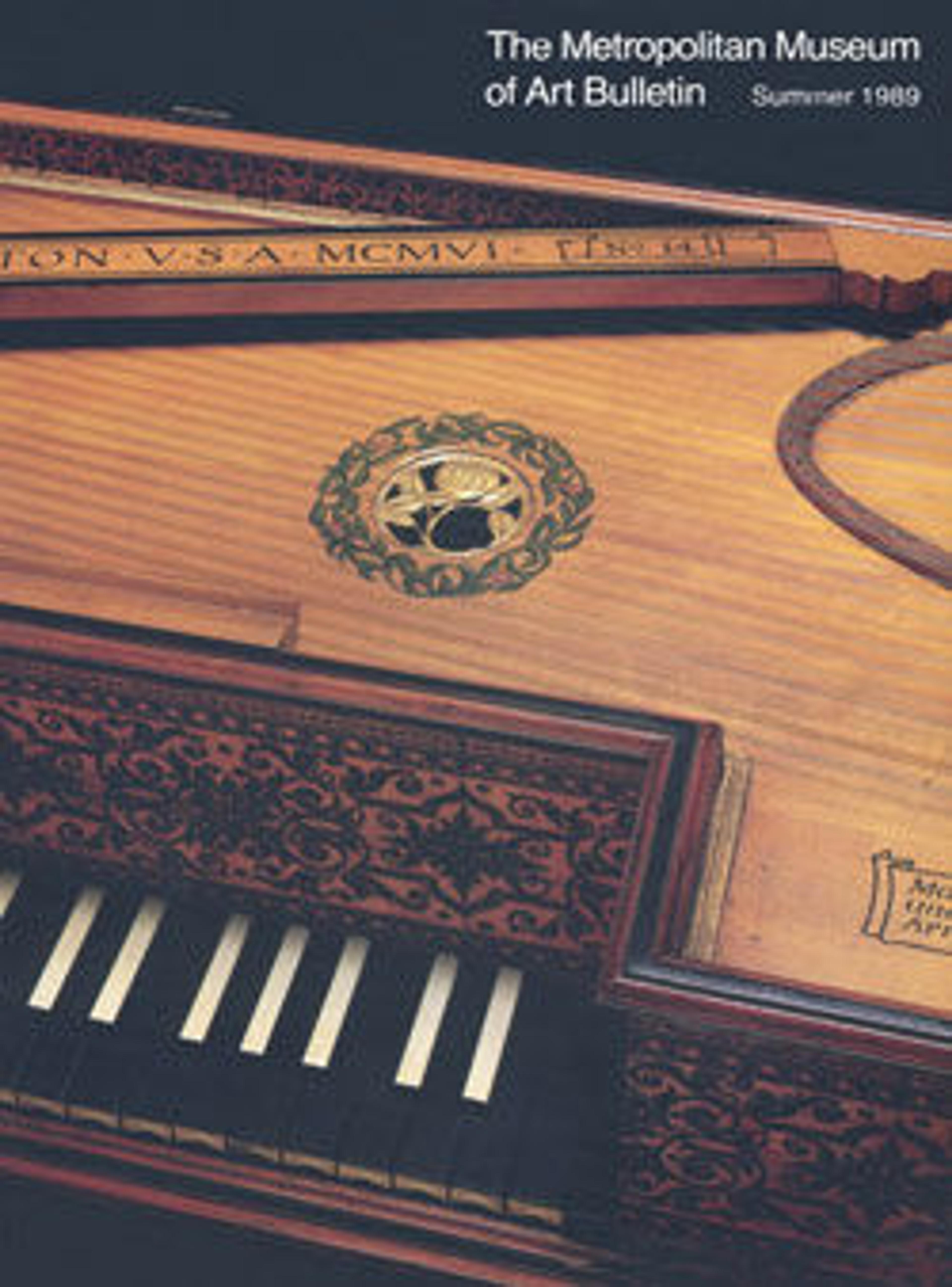Grand Piano
This beautifully preserved cherry-wood piano, which retains the maker's fragile wax seal on a label inside, was built by Ferdinand Hofmann, a leading member of Vienna's civic keyboard-maker's association. He became its president in 1806 and won a court appointment. The striking, almost architectural decor of this instrument typifies the maker's early work. Knee levers lift the dampers and a knob over the nameplate operates a mute, or moderator. The instrument has a five-octave range (sixty-one notes) and is double-strung in the bass and middle registers and triple-strung in the treble. The piano is of the type that was customary in Mozart’s day.
Technical description: Cherry case with curved tail, angled cheeks with brass candlestick sockets, 4 square tapered legs, Viennese action, FF-f3, double-strung 1-43, triple-strung 44-61, handstop centered over keyboard operates moderator, 2 knee levers lift undivided damper rack, frame and panel lid unfinished beneath main section, prop stick hinged to lid, ornamental pierced hinges, latches and lockplate, arcaded music rack and keyboard surrounds backed with green cloth, nameboard also topped by Greek key fretwork, oval white enamel nameplaque, ebony naturals with geometric inlaid fronts, bone-capped accidentals spine slotted for removal of moderator batten, string gauge numbers inked on soundboard, bridge backpinned except 57-61.
Technical description: Cherry case with curved tail, angled cheeks with brass candlestick sockets, 4 square tapered legs, Viennese action, FF-f3, double-strung 1-43, triple-strung 44-61, handstop centered over keyboard operates moderator, 2 knee levers lift undivided damper rack, frame and panel lid unfinished beneath main section, prop stick hinged to lid, ornamental pierced hinges, latches and lockplate, arcaded music rack and keyboard surrounds backed with green cloth, nameboard also topped by Greek key fretwork, oval white enamel nameplaque, ebony naturals with geometric inlaid fronts, bone-capped accidentals spine slotted for removal of moderator batten, string gauge numbers inked on soundboard, bridge backpinned except 57-61.
Artwork Details
- Title:Grand Piano
- Maker:Ferdinand Hofmann (Austrian, 1756–1829 Vienna)
- Date:ca. 1790
- Geography:Vienna, Austria
- Culture:Austrian
- Medium:Cherry wood, brass, enamel, ebony, bone
- Dimensions:Instr. 213cm x 97cm x 29cm
Legs 7cm x 7cm x 59cm (X4) - Classification:Chordophone-Zither-struck-piano
- Credit Line:Gift of Geraldine C. Herzfeld, in memory of her husband, Monroe Eliot Hemmerdinger, 1984
- Object Number:1984.34
- Curatorial Department: Musical Instruments
More Artwork
Research Resources
The Met provides unparalleled resources for research and welcomes an international community of students and scholars. The Met's Open Access API is where creators and researchers can connect to the The Met collection. Open Access data and public domain images are available for unrestricted commercial and noncommercial use without permission or fee.
To request images under copyright and other restrictions, please use this Image Request form.
Feedback
We continue to research and examine historical and cultural context for objects in The Met collection. If you have comments or questions about this object record, please contact us using the form below. The Museum looks forward to receiving your comments.
